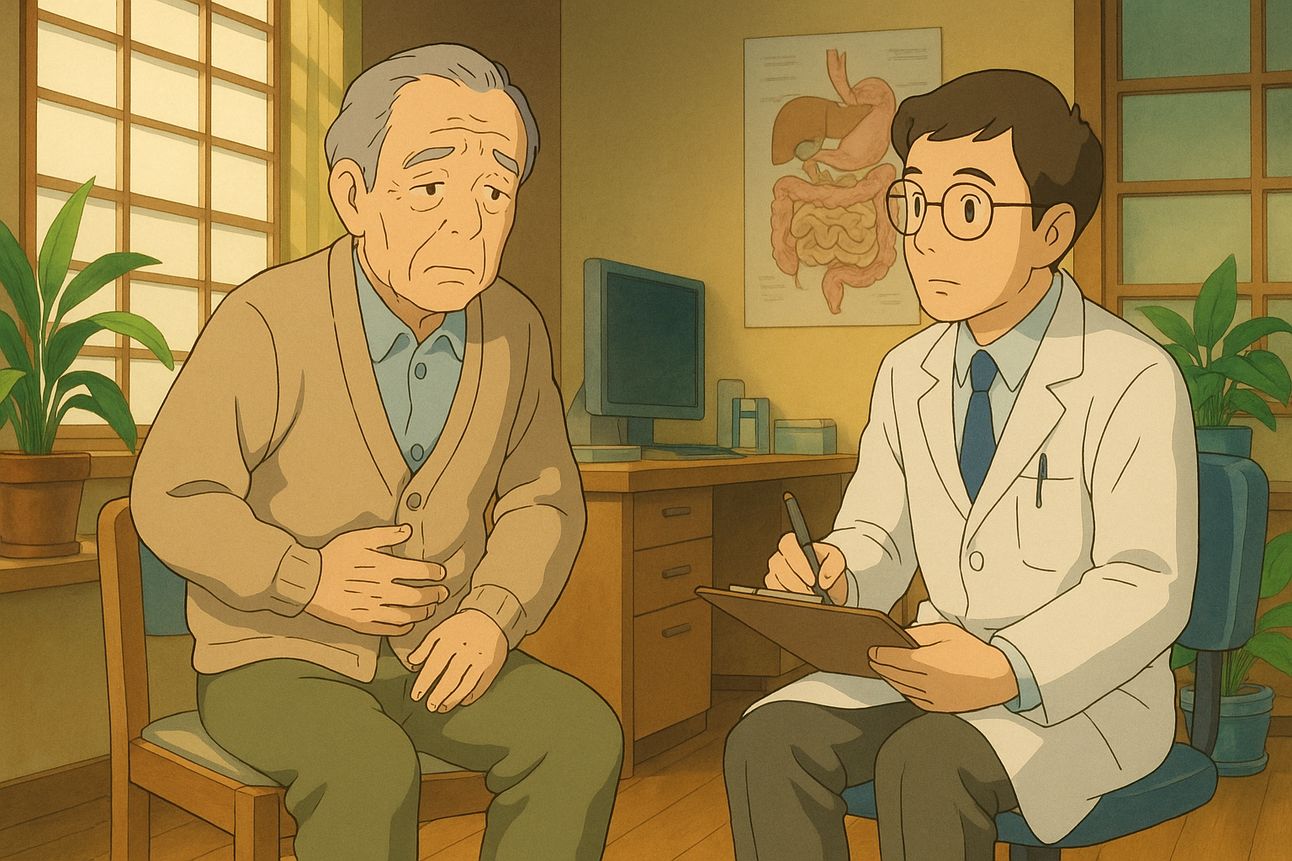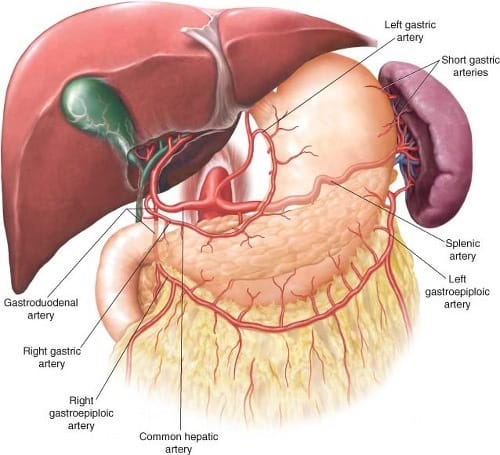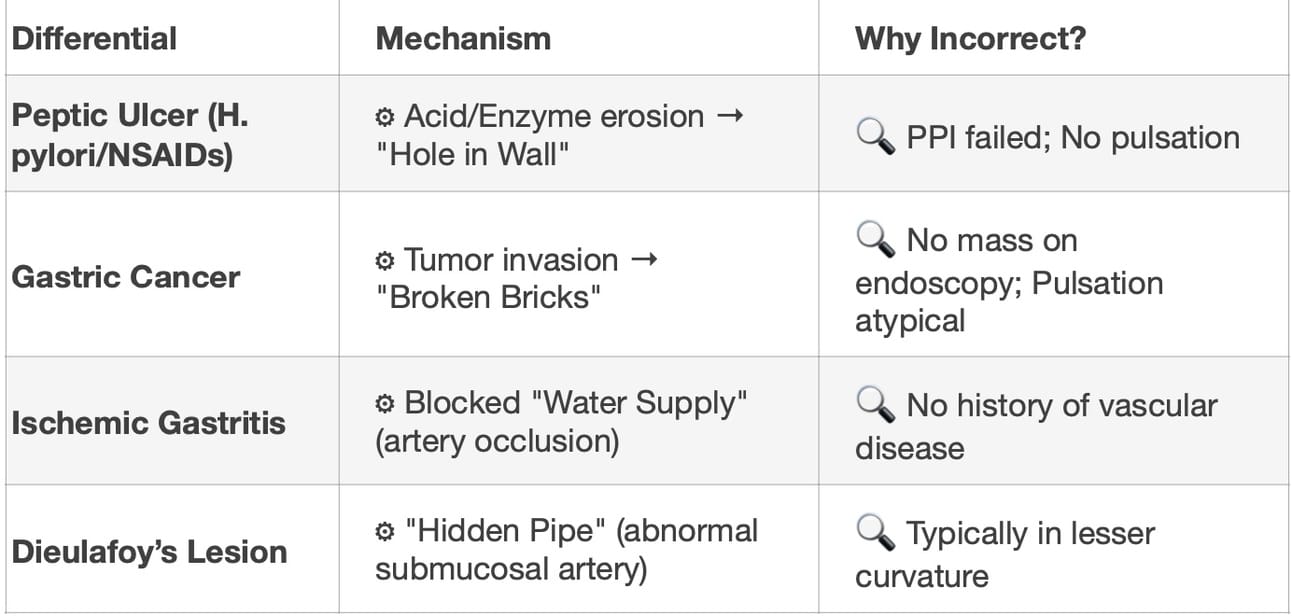- The Step 1 Newsletter
- Posts
- ☕️ Which of the following arteries is most likely visible in this case?
☕️ Which of the following arteries is most likely visible in this case?
Morning Quiz 121 ☕️
Morning Quiz ☕️

A 67-year-old man presents to the office with complaints of abdominal pain.
A trial of proton pump inhibitors (PPIs), started 5 weeks ago, failed to alleviate the pain.
The pain is described as dull, cramping, and worsens during meals.
Medical history: Unremarkable.
Physical examination: Normal, except for epigastric tenderness.
Endoscopy findings: Reveals an eroding gastric ulcer in the proximal part of the greater curvature of the stomach, overlying a large pulsating artery.
Question:
Which of the following arteries is most likely visible in this case?
Options:
A. Common hepatic artery
B. Left gastric artery
C. Right gastroepiploic artery
D. Left gastroepiploic artery
E. Superior pancreaticoduodenal artery
F. Cystic artery
G. Gastroduodenal artery

Correct Answer 🎯: D. Left gastroepiploic artery
⚙️

Gastric Ulcer Development
⬇
Mucosal erosion in proximal greater curvature (unresponsive to PPIs → suggests
non-acid etiology)
Location-Specific Blood Supply
⬇
Greater curvature vascular supply:
Proximal ⅔: Left gastroepiploic artery (branch of splenic artery)
Distal ⅓: Right gastroepiploic artery (branch of gastroduodenal artery)
Ulcer Erosion into Artery
⬇
Submucosal artery exposure → Visible pulsation (high-pressure arterial bleed
risk)
Left gastroepiploic artery is largest in this region → Most likely erodedPain Mechanism
⬇
Meal-induced pain: ↑ Blood flow during digestion → Pressure on exposed artery
Differential Table ⚖️

(Due to the nature of the question , there is no rapid recall )
Stay Hungry, Stay Curious!
PS…On What topic do you want me to cover next? Reply to this email. I read every response!
Your Brother in This Struggle
Dr. Shoaib Ahmad
